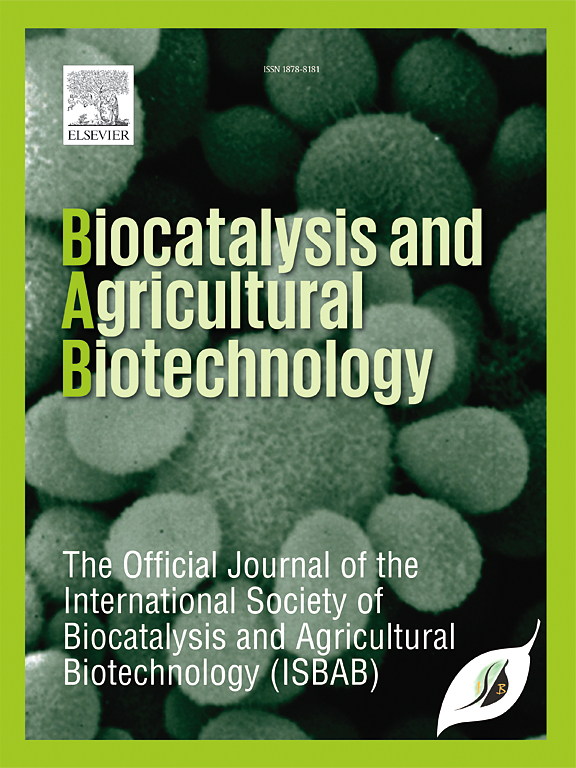Immunomodulatory properties of a β-glucan-rich bioflour of Bactris gasipaes shells colonized by Lentinula edodes
IF 3.4
Q2 BIOTECHNOLOGY & APPLIED MICROBIOLOGY
引用次数: 0
Abstract
Lentinula edodes β-glucans have shown potential in reducing lung injury caused by inflammation associated with severe acute respiratory syndrome (SARS). This study aimed to investigate the immunomodulatory properties related to lung inflammation, both in vitro and in vivo, of a high-β-glucan content bioflour derived from peach palm (Bactris gasipaes) shells colonized by Lentinula edodes (BPL). Neutrophils, L929, and A549 cells were treated (in vitro) with different doses (1, 10, 100 μg/mL) of BPL extracts (EBPL). The cells were subjected to cell viability assays, oxidative stress evaluation, and NO2 quantification. Male Swiss mice were divided into five groups (in vivo). Lung inflammation was induced via intranasal instillation of LPS (4 mg/kg), and the mice were treated orally with BPL. A control group received a vehicle or dexamethasone (0.5 mg/kg). Bronchoalveolar lavage (BAL) was collected to quantify total leukocytes, the mouse-to-lung weight ratio was calculated, and histological analysis was performed. Treatment with EBPL (in vitro) did not induce toxicity in cell lines and NO2 production decreased in neutrophils treated with the extracts; however, it did not reduce oxidative stress in A549 cells. A reduction in leukocytes was observed (in vivo) in BAL [11.43 × 105 (control), 9 × 105 (3 mg/kg), 3.33 × 105 (30 mg/kg), 1.43 × 105 (300 mg/kg) leukocytes/mL), histological infiltration, and a lower lung/mouse weight ratio [91.27 (control), 78.20 (3 mg/kg), 65.37 (30 mg/kg), 71.08 (300 mg/kg)]. This study highlights the nutraceutical potential of a β-glucan-rich food ingredient as an adjunct therapy for treating lung inflammation through dietary means, promoting human health and nutrition.

香菇定殖的富含β-葡聚糖的气体杆菌壳生物粉的免疫调节特性
香菇β-葡聚糖已显示出减轻由严重急性呼吸系统综合征(SARS)相关炎症引起的肺损伤的潜力。本研究旨在研究从香菇(Lentinula edodes, BPL)定殖的桃棕榈(Bactris gasipaes)壳中提取的高β-葡聚糖含量生物面粉在体外和体内与肺部炎症相关的免疫调节特性。用不同剂量(1、10、100 μg/mL)的BPL提取物(EBPL)处理嗜中性粒细胞、L929和A549细胞。细胞进行细胞活力测定、氧化应激评估和NO2定量。雄性瑞士小鼠分为5组(体内)。小鼠经鼻灌胃LPS (4 mg/kg)诱导肺部炎症,并口服BPL。对照组给予车辆或地塞米松(0.5 mg/kg)。收集支气管肺泡灌洗液(BAL),定量白细胞总数,计算小鼠与肺重量比,并进行组织学分析。EBPL(体外)处理对细胞系没有诱导毒性,提取物处理的中性粒细胞NO2产量下降;然而,它并没有降低A549细胞的氧化应激。体内观察到BAL [11.43 × 105(对照组),9 × 105 (3 mg/kg), 3.33 × 105 (30 mg/kg), 1.43 × 105 (300 mg/kg)白细胞/mL]的减少,组织学浸润,肺/小鼠体重比降低[91.27(对照组),78.20 (3 mg/kg), 65.37 (30 mg/kg), 71.08 (300 mg/kg)]。本研究强调了富含β-葡聚糖的食品成分作为通过饮食手段治疗肺部炎症的辅助疗法,促进人体健康和营养的营养保健潜力。
本文章由计算机程序翻译,如有差异,请以英文原文为准。
求助全文
约1分钟内获得全文
求助全文
来源期刊

Biocatalysis and agricultural biotechnology
Agricultural and Biological Sciences-Agronomy and Crop Science
CiteScore
7.70
自引率
2.50%
发文量
308
审稿时长
48 days
期刊介绍:
Biocatalysis and Agricultural Biotechnology is the official journal of the International Society of Biocatalysis and Agricultural Biotechnology (ISBAB). The journal publishes high quality articles especially in the science and technology of biocatalysis, bioprocesses, agricultural biotechnology, biomedical biotechnology, and, if appropriate, from other related areas of biotechnology. The journal will publish peer-reviewed basic and applied research papers, authoritative reviews, and feature articles. The scope of the journal encompasses the research, industrial, and commercial aspects of biotechnology, including the areas of: biocatalysis; bioprocesses; food and agriculture; genetic engineering; molecular biology; healthcare and pharmaceuticals; biofuels; genomics; nanotechnology; environment and biodiversity; and bioremediation.
 求助内容:
求助内容: 应助结果提醒方式:
应助结果提醒方式:


